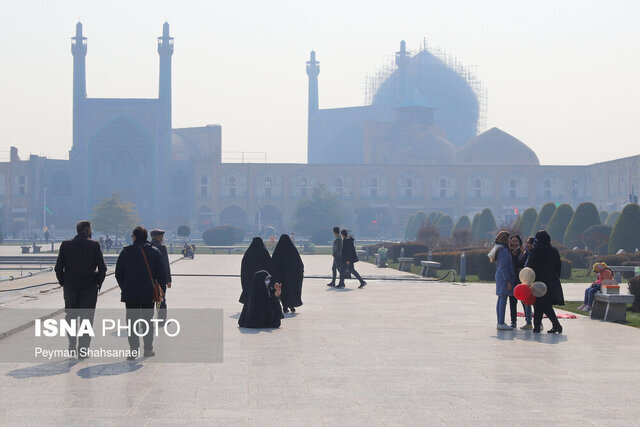Air pollution may pose threat to Isfahan’s historical monuments

TEHRAN – Air pollution has adverse effects on the historical monuments in the ancient city of Isfahan, a researcher, and an expert in traditional architecture has said.
By forming crystals from air pollution, historical monuments are covered with a spongy surface allowing acids and organic substances to penetrate, ISNA quoted Seyyed Masoud Musavizadeh as saying on Tuesday.
In addition, microorganisms deposit on this spongy surface, causing destruction, he explained.
In historical buildings, dust and dirt not only obscure the original color of the surface but also create a destructive platform, he added.
It is important to study and conduct research on how pollutants affect architectural heritage, he noted.
Therefore, universities need to engage in such discussions about historical monuments in different regions and conduct the appropriate and related monitoring and observational tasks, he mentioned.
Soaked in a rich history, Isfahan was once been a crossroads of international trade and diplomacy in Iran and now it is one of Iran’s top tourist destinations for good reasons.
It is filled with many architectural wonders, such as unmatched Islamic buildings, bazaars, museums, Persian gardens, and tree-lined boulevards. It’s a city for walking, getting lost in its amazing bazaars, dozing in beautiful gardens, and meeting people.
The ancient city is renowned not only for the abundance of great historical bridges but also for its ‘life-giving river’, the Zayandeh-Rood, which has long bestowed the city an original beauty and fertility.
Isfahan has long been nicknamed as Nesf-e-Jahan which is translated into “half the world”; meaning seeing it is relevant to see half the world. In its heyday, it was also one of the largest cities in the region with a population of nearly one million.
The cool blue tiles of Isfahan’s Islamic buildings, and the city’s majestic bridges, contrast perfectly with the encircling hot, dry Iranian countryside.
The huge Imam Square, best known as Naghsh-e Jahan Sq. (literary meaning “Image of the World”), is one of the largest in the world (500m by 160m), and a majestic example of town planning. Constructed in the early 17th century, the UNESCO-registered square is punctuated with the most interesting sights in Isfahan.
Modern Isfahan is home to some heavy industry, including steel factories and a nuclear facility on its outskirts. However, its inner core wants to be preserved as a priceless gem.
The city is also home to a gigantic, professional, and state-of-the-art healthcare city, which is a major destination in the realm of medical tourism.
ABU/AM
